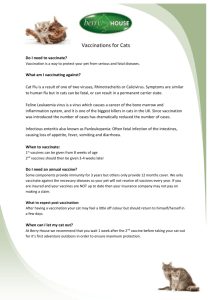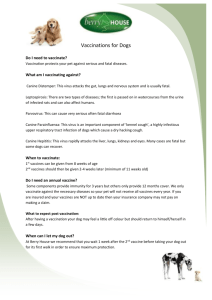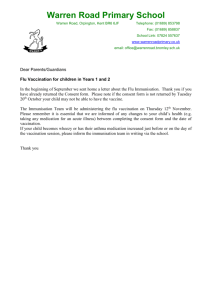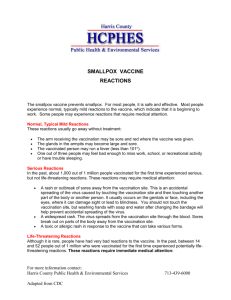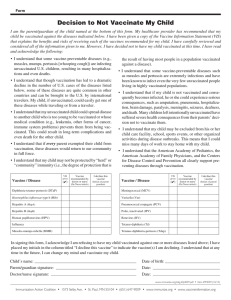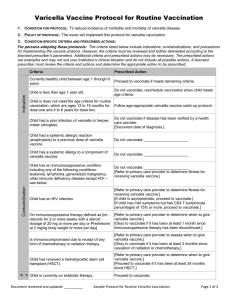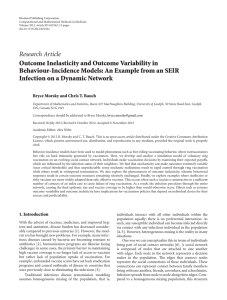What influences our decisions about vaccination?
advertisement
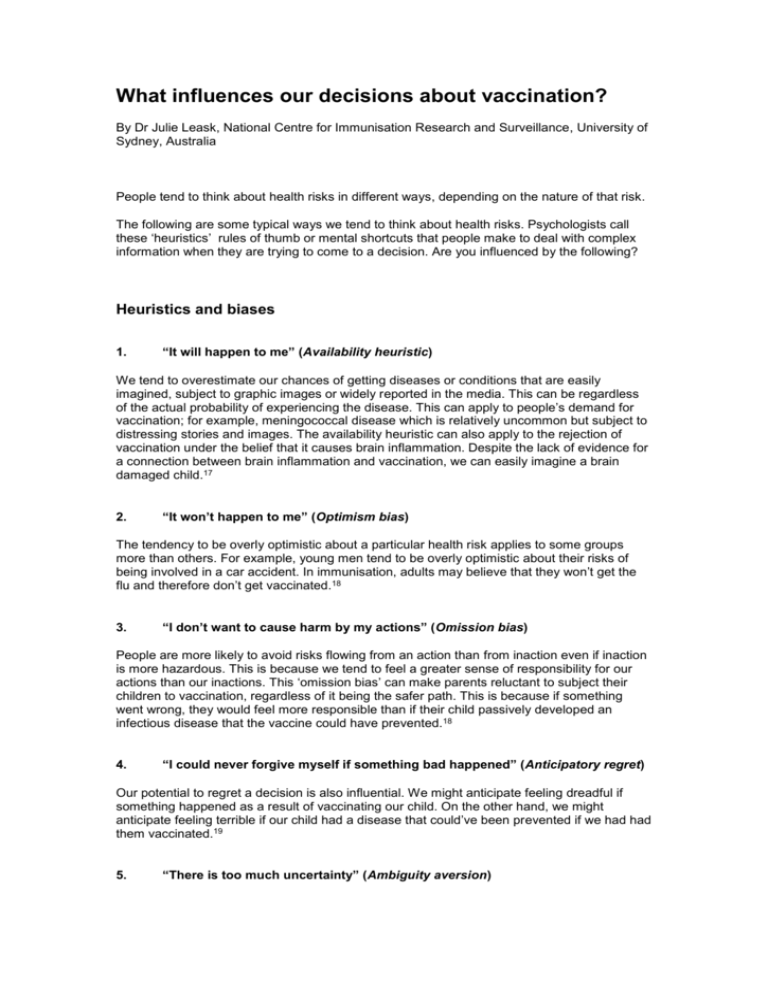
What influences our decisions about vaccination? By Dr Julie Leask, National Centre for Immunisation Research and Surveillance, University of Sydney, Australia People tend to think about health risks in different ways, depending on the nature of that risk. The following are some typical ways we tend to think about health risks. Psychologists call these ‘heuristics’ rules of thumb or mental shortcuts that people make to deal with complex information when they are trying to come to a decision. Are you influenced by the following? Heuristics and biases 1. “It will happen to me” (Availability heuristic) We tend to overestimate our chances of getting diseases or conditions that are easily imagined, subject to graphic images or widely reported in the media. This can be regardless of the actual probability of experiencing the disease. This can apply to people’s demand for vaccination; for example, meningococcal disease which is relatively uncommon but subject to distressing stories and images. The availability heuristic can also apply to the rejection of vaccination under the belief that it causes brain inflammation. Despite the lack of evidence for a connection between brain inflammation and vaccination, we can easily imagine a brain damaged child.17 2. “It won’t happen to me” (Optimism bias) The tendency to be overly optimistic about a particular health risk applies to some groups more than others. For example, young men tend to be overly optimistic about their risks of being involved in a car accident. In immunisation, adults may believe that they won’t get the flu and therefore don’t get vaccinated.18 3. “I don’t want to cause harm by my actions” (Omission bias) People are more likely to avoid risks flowing from an action than from inaction even if inaction is more hazardous. This is because we tend to feel a greater sense of responsibility for our actions than our inactions. This ‘omission bias’ can make parents reluctant to subject their children to vaccination, regardless of it being the safer path. This is because if something went wrong, they would feel more responsible than if their child passively developed an infectious disease that the vaccine could have prevented.18 4. “I could never forgive myself if something bad happened” (Anticipatory regret) Our potential to regret a decision is also influential. We might anticipate feeling dreadful if something happened as a result of vaccinating our child. On the other hand, we might anticipate feeling terrible if our child had a disease that could’ve been prevented if we had had them vaccinated.19 5. “There is too much uncertainty” (Ambiguity aversion) The degree of uncertainty about a health risk can influence our decisions. We tend to be less welcoming of an intervention if there is a lot of uncertainty about the level of risk it poses, even if the estimate of that risk is very low. When parents believe there to be expert dissent about risk from a particular vaccine, this apparent ambiguity may make them avoid vaccinating their children.20 6. “I prefer to go along with the crowd” (Bandwagoning) We are social beings and are influenced by what we believe others are doing. This ‘bandwagoning’ phenomenon has influenced the adoption of many preventive behaviours, from wearing seatbelts to quitting smoking. We can be more likely to vaccinate if we believe the majority of others are doing so. Bandwagoning can also work the other way: if our social networks include lots of people who don’t vaccinate, we may feel more hesitant about it. 21 7. “I don’t need to vaccinate because other people are” (Free-riding) Our decision to vaccinate our child can depend on how prevalent we think the disease is. We may think our child is at low risk of a disease because it is not around anymore or because it is just not very common to begin with. Polio or diphtheria are examples of diseases which were common but have been controlled by vaccination and are rare in developed countries like Australia. Those who decide to not vaccinate for well controlled diseases may choose to ‘free-ride’ off the immunity of others provided by high immunisation rates. 21 8. “I want to protect others” (Altruism) Some people may be concerned to not just protect their own child’s health but the health of others who are too young to be fully vaccinated or cannot be vaccinated for medical reasons. This altruism may also affect our desire to maintain high levels of ‘herd’ immunity so diseases like polio do not return. This can make us vaccinate even if we think the disease risk for our own child is low.21 Other influences 1. “Who is giving me this information?” (Trust) Trust in the person giving the health risk information is one of the most important influences on our decisions. When we hear conflicting information and have trouble making a decision, it is often the credentials of the person or organisation giving the information that tips us one way or the other. People tend to be more trusting of doctors but this is not always the case. Some people may feel more affinity with conveyors of alternative therapies and want to avoid medical means of disease prevention. Most people have a lack of trust about health information from private industry because they believe the information is not neutral but influenced by financial interests. Trust in government organisations can vary – while some regard the government’s motives with suspicion, others will say that the government does not seek to intentionally cause harm.22 2. “How are the risks being presented?” (Framing) Depending on how it is presented, information about health risks can swing us in different directions. Many studies have found that risks from a medicine put in a positive way are more acceptable than those framed negatively. For example, if it is said about a vaccine that “90 per cent of children do not develop side effects”, people are more likely to adopt vaccination than if it is said that “10 per cent of children will develop side effects”. This phenomenon is called ‘gain frame’.23
